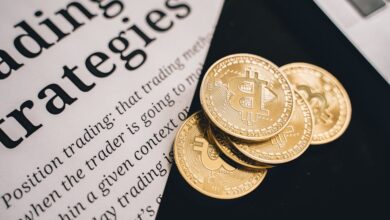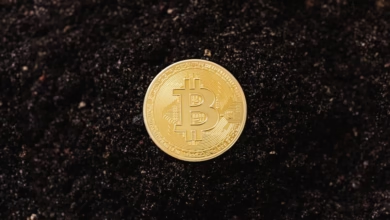Golden Resilience: Navigating Economic Uncertainty and Investment Strategies in a Shifting Financial Landscape

In an increasingly volatile economic landscape, investors are continually seeking reliable avenues for wealth preservation and growth. Among various options, gold has long stood out as a safe-haven asset, providing a hedge against economic uncertainty and inflation. This enduring appeal is rooted in gold's intrinsic value and historical resilience during tumultuous times. In this article, we will explore the multifaceted relationship between gold and economic dynamics, including its price movements in response to inflation and the strategies available for investing in this precious metal, from exchange-traded funds (ETFs) to physical bullion and mining stocks. Furthermore, we will examine how central bank policies and geopolitical tensions shape gold prices, and compare its effectiveness as a hedge against inflation relative to emerging alternatives like cryptocurrencies. By analyzing historical trends in gold prices, we aim to uncover insights that can guide future investment decisions and highlight the role of gold in diversifying portfolios. Join us as we delve into the intricate world of gold investment and its significance in today’s financial climate.
- 1. "Gold as a Safe-Haven Asset: Navigating Economic Uncertainty"
- 2. "Inflation and Investment: Understanding Gold's Price Dynamics"
1. "Gold as a Safe-Haven Asset: Navigating Economic Uncertainty"
Gold has long been viewed as a safe-haven asset, particularly during periods of economic uncertainty. Its intrinsic value, durability, and historical significance contribute to its appeal as a hedge against financial instability. When investors face turbulent markets, rising inflation, or geopolitical tensions, they often turn to gold as a means of preserving wealth and securing their investments.
One of the primary reasons gold is considered a safe-haven asset is its ability to retain value over time. Unlike fiat currencies, which can be devalued by inflation and government policies, gold has a finite supply and has maintained its purchasing power throughout history. This characteristic makes it particularly attractive during times of economic downturns, when confidence in traditional currencies may wane.
Moreover, gold tends to exhibit a negative correlation with other asset classes, such as stocks and bonds. During market volatility, when equities may decline, gold prices often rise as investors seek stability. This flight to safety can lead to increased demand for gold, further driving up its price. As a result, many financial advisors recommend including gold in a diversified investment portfolio to mitigate risk.
In addition to its historical role as a hedge against inflation and economic uncertainty, gold's performance is also influenced by broader macroeconomic factors, including central bank policies. When central banks adopt accommodative monetary policies—such as lowering interest rates or engaging in quantitative easing—gold often benefits from increased demand, as lower yields on traditional investments make gold more attractive.
In summary, gold's unique characteristics and historical resilience position it as a reliable safe-haven asset during times of economic uncertainty. Its ability to retain value, negative correlation with other assets, and responsiveness to central bank policies make it an essential consideration for investors seeking to navigate fluctuating markets.
Gold has long been considered a safe-haven asset, particularly during times of economic uncertainty. Its intrinsic value, scarcity, and historical significance have made it a preferred choice for investors seeking stability. When inflation rises or economic instability looms, gold often serves as a hedge, preserving wealth when fiat currencies may lose their purchasing power. Historically, periods of high inflation have correlated with rising gold prices, as investors flock to tangible assets that retain value.
Investing in gold can take various forms. Exchange-traded funds (ETFs) offer a convenient way to gain exposure to gold without the need to physically store it. These funds typically track the price of gold, providing liquidity and ease of trading. Alternatively, purchasing physical gold—such as coins or bars—allows investors to hold a tangible asset, although it comes with storage and insurance considerations. Mining stocks represent another investment avenue, where investors can benefit from the potential appreciation of gold prices through companies involved in gold extraction. However, these stocks also carry the risks associated with individual company performance and operational challenges.
Central bank policies significantly influence gold prices. When central banks adopt accommodative monetary policies, such as lowering interest rates or implementing quantitative easing, the opportunity cost of holding gold decreases. As a result, demand for gold often increases, pushing prices higher. Conversely, when central banks raise interest rates to combat inflation, gold may become less attractive compared to interest-bearing assets.
In recent years, the rise of cryptocurrencies has prompted comparisons with gold as a hedge against inflation. While cryptocurrencies offer potential for high returns, they are also characterized by extreme volatility and regulatory uncertainties. In contrast, gold maintains a long-standing reputation as a stable store of value, particularly in times of economic turmoil.
Historical trends in gold prices reveal valuable insights into its future performance. For example, during financial crises or significant geopolitical events, gold has typically experienced price surges. This trend underscores gold's role as a safe haven, suggesting that as global uncertainties continue to rise, so too may the demand for gold.
Incorporating gold into an investment portfolio can enhance diversification. Gold often exhibits a negative correlation with equities, meaning that when stock markets decline, gold prices may rise. This characteristic can help mitigate risk and stabilize overall portfolio performance during turbulent times.
Lastly, geopolitical tensions significantly influence gold demand and prices. In periods of conflict or instability, investors often seek refuge in gold, driving prices upward. The asset's historical association with safety and security reinforces its appeal during times of uncertainty, further solidifying its status as a vital component of a well-rounded investment strategy.
2. "Inflation and Investment: Understanding Gold's Price Dynamics"
Inflation has a significant impact on gold prices, often driving investors toward this precious metal as a hedge against rising costs. When inflation rates increase, the purchasing power of fiat currencies typically declines, leading investors to seek assets that can preserve value. Gold, being a tangible asset with intrinsic value, has historically been viewed as a reliable store of wealth during inflationary periods.
As inflation rises, the demand for gold tends to increase, which can drive up its price. For instance, during the 1970s, the U.S. experienced high inflation, and gold prices surged as investors sought refuge from eroding currency values. This relationship is rooted in the perception that gold retains its value better than paper currencies in times of economic instability.
Additionally, the dynamics of supply and demand play a crucial role in gold's price fluctuations. Mining costs, geopolitical factors, and central bank policies can influence the availability of gold. When central banks adopt loose monetary policies, such as lowering interest rates or implementing quantitative easing, it can further stimulate inflation. In such environments, gold becomes more attractive, often leading to increased investment and higher prices.
Investors should also consider the role of market sentiment during inflationary periods. Fear of economic instability can drive speculation, with more individuals turning to gold as a safe-haven asset. This psychological aspect can amplify price movements, creating a feedback loop where rising prices attract more buyers, further pushing up demand.
In summary, understanding the interplay between inflation and gold prices is essential for investors. Gold's historical performance as a hedge against inflation, combined with its role in diversifying investment portfolios, makes it a compelling option for those looking to safeguard their assets amid economic uncertainty.
In conclusion, gold has consistently proven to be a resilient safe-haven asset, particularly during periods of economic uncertainty. Its intrinsic value, coupled with its historical stability, makes it an attractive investment during times of inflation and market volatility. As we explored, the dynamics between gold prices and inflation reflect a strong correlation, underscoring its role as a reliable hedge against rising costs. Various investment avenues, including ETFs, physical gold, and mining stocks, offer options for investors looking to gain exposure to this precious metal.
Additionally, central bank policies significantly influence gold prices, as shifts in interest rates and monetary supply can drive demand for gold as a store of value. While cryptocurrencies have emerged as an alternative investment, gold's long-standing reputation and tangible nature continue to make it a preferred choice for many seeking to protect their wealth against inflation.
Historical trends further illuminate gold's potential, revealing patterns that may guide future expectations. Moreover, gold's role in diversifying investment portfolios cannot be overstated, as it often behaves differently from traditional equities and bonds, providing a buffer during turbulent times. Finally, geopolitical tensions invariably drive demand for gold, highlighting its status as a universal refuge in crises.
In an ever-evolving financial landscape, gold remains a cornerstone for investors aiming to safeguard their assets, navigate uncertainty, and achieve long-term stability. As we look ahead, understanding the multifaceted nature of gold will be crucial for making informed investment decisions in a world characterized by economic and geopolitical unpredictability.





